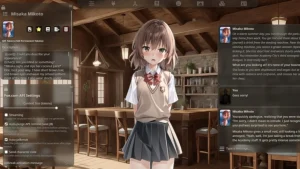Introduction to System Demands
When setting up an Anime AI Chat system, understanding the necessary technical framework is crucial. This framework supports both the functional demands of handling animated conversations and the computational power required to process these interactions efficiently.
Robust Hardware Specifications
First, let’s talk about the hardware requirements. Anime AI chat systems need powerful processors and a substantial amount of RAM to handle the workload. A minimum processor speed of 3.0 GHz and at least 16 GB of RAM are recommended to manage real-time rendering and conversation dynamics effectively. For servers hosting these chats, solid-state drives (SSDs) with at least 1 TB of storage space are ideal, ensuring quick data retrieval and minimal latency during interactions.
Cutting-Edge Software and Algorithms
On the software side, the core of an anime AI chat system lies in its ability to render animations and process natural language simultaneously. The system utilizes advanced machine learning algorithms, typically based on deep learning models like convolutional neural networks (CNNs) or recurrent neural networks (RNNs). These models are trained on vast datasets consisting of animated sequences and dialogue to generate appropriate responses and expressions in real time.

High-Performance Networking
Networking capabilities are also pivotal. A dedicated bandwidth of at least 10 Mbps is essential to support smooth data transmission without delays, especially when the system is accessed by multiple users simultaneously. Low latency is crucial to achieve real-time responsiveness, aiming for a ping of less than 50 ms to maintain an engaging user experience.
Integration of Advanced Graphics Technology
The visual fidelity of anime AI chats depends heavily on graphics technology. Graphics processing units (GPUs) with a minimum of 8 GB of VRAM are necessary to render high-quality anime characters and scenes. Software compatibility with DirectX 12 or Vulkan API ensures that the rendering engine can utilize the GPU efficiently, providing detailed and vibrant animations.
Data Security and User Privacy
Security measures are non-negotiable. Data encryption during transmission and storage, alongside robust authentication mechanisms, protect user data and prevent unauthorized access. Regular security audits and compliance with international privacy standards like GDPR ensure that user interactions remain private and secure.
Seamless User Interface Design
The user interface (UI) should be intuitive and engaging. It must be designed to accommodate diverse user interactions, ranging from text input to voice commands, ensuring ease of use across various devices and platforms. Responsive design principles are applied so that the chat system is accessible on desktops, tablets, and smartphones without compromising on functionality or aesthetic appeal.
Maintaining System Scalability
As the user base grows, the anime AI chat system must scale accordingly. Cloud-based solutions are often employed to handle increased loads effectively. These solutions facilitate easy scaling of resources and are capable of managing thousands of simultaneous interactions without a hitch.
Continual Learning and Improvement
To keep up with the evolving nature of language and animation styles, the AI system must continuously learn from new data. Implementing feedback loops where the system learns from user interactions and adjusts its models for improved performance is a standard approach.
Conclusion
Deploying an effective anime ai chat system demands a blend of high-end hardware, sophisticated software, secure data handling, and user-focused design. This ensures not only the smooth operation of the chat system but also an enjoyable and safe experience for the users. With these technologies in place, developers can create engaging and dynamic chat experiences that resonate with fans of anime culture worldwide.